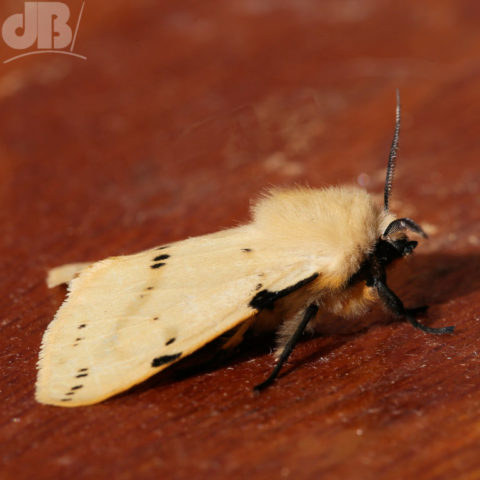Natural history bookseller NHBS Ltd also sells moth traps similar to the Robinson-type trap my friend Rob built way-back-when (2006, actually). I’ve sited his homemade trap in my garden in the hope of seeing a few creatures of the night in the morning. Of course, this process is one of scientific observation and interest, we’re not trapping them to kill them, once caught and observed they are released back into the wild of the back garden. Meanwhile, the NHBS blog – The Hoopoe – has a few tips on setting up and using a trap, which I’ve cribbed and adapted below.

- Site your trap in a garden with lots of nectar-rich native plants, preferably species that open their flowers at night and on which moths like to feed: night-scented stock, evening primrose, honeysuckle, nicotinia. In September and October, ivy blossom can provide an abundant source of nectar for many species of moth.
- Opt for a brighter mercury vapour bulb rather than an actinic type lamp if you can as this will attract more moths, although the bright mercury bulb might annoy neighbours that overlook your garden and it also needs protection from the rain as it glows hot and could shatter. Your mileage may vary, Rob caught a lot of moths with his actinic lamp. However, NHBS suggest that you might trap 500-1000 moths with a mercury-bulb trap.
- Cloudy, warm, and moonless nights are best, Don’t set your trap on a cold, clear night, especially after a warm spell, as there will be far fewer moths and fewer species venturing out.
- Avoid windy or wet nights, many moths will simply not fly and rain might damage your equipment.
- Set the trap away from streetlights and switch off any external lighting in your garden as these will attract moths to them rather than the trap.
- If there are southerly winds, the UK’s south coast might see increased numbers of migrants carried up from the continent.
- You will get best results in July and August when moths are abundant and active. Check local wildlife websites and discussion groups for advice on moths that might be flying at other times of the year, especially in rural areas.
- Don’t set your trap too often and avoid setting it on consecutive nights to avoid catching the same moths, you might end up starving them if they’re trapped repeatedly early in the evening before they have eaten.
- Check your trap as soon as possible after dawn. If you cannot do so, then make sure it’s not going to be in direct sunlight when the sun rises.
- If the rising sun is likely to be incident on your trap in the morning, place a wet sponge in the base of the trap to provide hydrating water for the temporarily incarcerated creatures.
- Once you’ve examined, counted, photographed your trawl, release the moths into dense vegetation. If you plan to use the trap again, carry out the release at least 50 metres away from the trapping site to avoid capturing the same moths again, for the sake of the moths.
- Watch out for predatory blackbirds and other birds that might latch on to the sudden flurry of dozy moths in the morning and make a meal of them. You can tell if a moth is only just waking up as it will most likely be quivering and vibrating its wings.
- Be wary of wasps and hornets that might also have been trapped. Early in the morning these creatures will be fairly docile and can be removed with little risk of you being stung, however.
There was an Elephant Hawk-moth in the trap this morning, and there was me about to give up hope of catching a Hawk in our garden! Anyway, I posted a few pictures on one of the moth groups on Facebook and got some additional advice from a reader there called Jacqueline:
I always release any caught moths at night where there is less chance of them becoming an easy meal. Keep the moths that you don't want a closer look at covered to try and avoid escapees, and place in the cool shade. Ones you want to look closely at or photograph, pot them and put them in the fridge to cool down, then late afternoon, by the time they've had time in the fridge, try photographing them. They will warm up quicker when the weather is warmer so be aware of that and get ready to re-pot safely if they decide to fly. Have a larger tub for the larger moths like the Elephant Hawkmoth etc. When you have finished with photos, put them back in their pots, you can then either keep them on a table until you release at night.
Of course, there is the issue of pipistrelle bats, of which we have several that circulate our garden at dusk. They eat several hundred moths each most days, apparently. So, not sure which approach is best: night or day release…